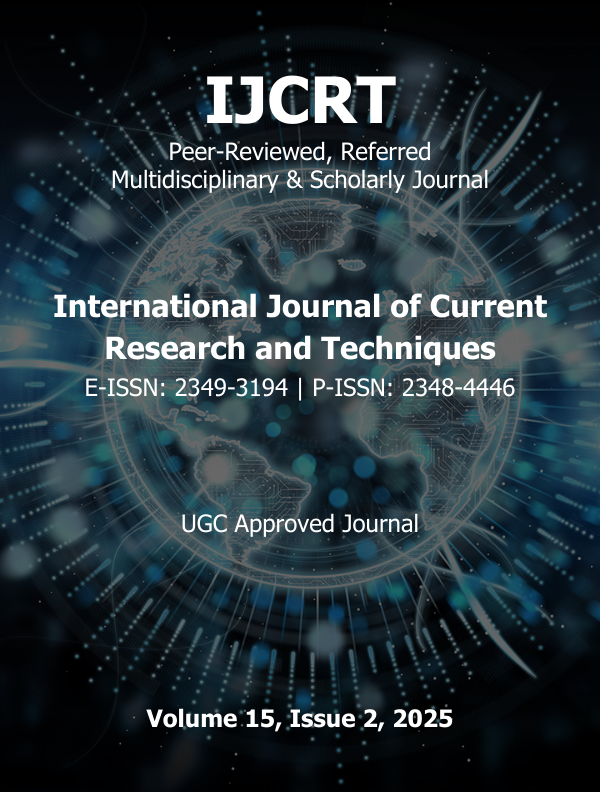Effect of Stratified Exercise Therapy Versus Standard Physiotherapy on Pain and Function in Subjects with Knee Osteoarthritis
Published 2025-05-19
Keywords
- Knee Osteoarthritis,
- Stratified Exercise Therapy,
- Standard Physiotherapy,
- Experiments
How to Cite
Copyright (c) 2025 IJCRT Research Journal | UGC Approved and UGC Care Journal | Scopus Indexed Journal Norms

This work is licensed under a Creative Commons Attribution 4.0 International License.
Abstract
Knee Osteoarthritis (OA) is a common degenerative condition among the elderly, leading to pain and functional limitations. While standard physiotherapy is routinely used to manage symptoms, stratified exercise therapy, an approach tailored to patient subgroups based on specific characteristics, is less commonly applied in orthopedic settings. This quasi-experimental study aimed to compare the effectiveness of stratified exercise therapy versus standard physiotherapy in reducing pain and improving function in individuals with Grade 2 and 3 Knee OA. A total of 180 participants with a mean age of 52 years were clinically diagnosed with Knee OA and randomly assigned to two groups. Group A (n=135) was subdivided into three subgroups based on BMI and upper leg muscle strength and received stratified exercise therapy. Group B (n=45) received standard physiotherapy. Both interventions were administered for over 12 weeks. Outcomes were assessed using the Visual Analogue Scale (VAS) for pain and the Western Ontario and McMaster University Osteoarthritis Index (WOMAC) for function. ANOVA and post hoc analyses revealed that while both groups showed significant improvements, stratified exercise therapy resulted in greater reductions in pain and improvements in function. These findings suggest that stratified exercise therapy may be a more effective option for managing Knee Osteoarthritis compared to standard physiotherapy.

